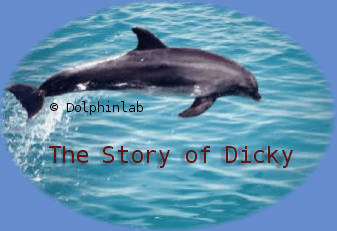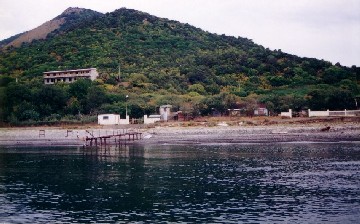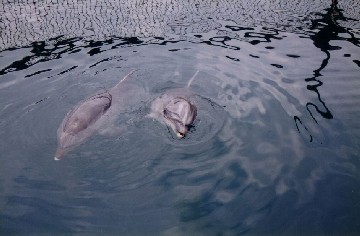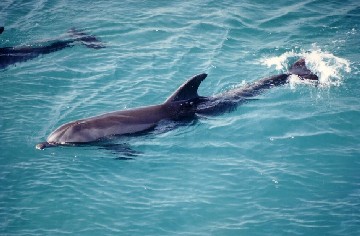Back to the Black
by Frank Veit
The Release of Dicky in the Black Sea, after spending six years in the Red Sea.- And his vocalizations during different stages of arousal -

Introduction

Throughout the past decade numerous attempts were made to release captive dolphins back to the wild and the outcome of these projects was measured in post-release sightings or tracking. To our knowledge there was only one documented case of individual dolphins having successfully readapted to their natural environment after extended periods in captivity (Bassos et al. 1991). The use of effective tracking devices to assess the fate of released animals was considered as a main issue in marine mammal release projects. Here we present details on the release of an adult male bottlenose dolphin at his original capture site in the Black Sea, Russia, in August 1996. Prior to his release the male named Dicky had been kept for six years under semi-free conditions in the Dolphin Reef, Eilat, Israel, as part of a colony of nine individuals. At the time of this project, Dicky was estimated to be eleven years old. In order to prepare his rehabilitation, Dicky had been exposed to different behavioural tasks and environmental situations directly related to problems that might be encountered in the open sea. An entirely new method was applied in this project to facilitate the social readaption by releasing him together with a recently captured female from the local population.
Map of the Northern part of the Black Sea showing the location of the Russian Research Station Utrich, the area of release and the area of the first sightings.
Procedure
On August 20, 1996, Dicky was transferred from Israel to Russia by airplane and truck. The transfer took about 10 hours. At most times, Dicky was transported in a tank partly filled with water (leaving his blowhole free of water constantly) together with a human companion.

Upon arrival at the Biological Station Utrich, Russia, Dicky was introduced into an open sea pen (10 m x 10 m, 6 m deep), where he joined an adult female (Blanca) caught from the local population in May 1996. Blanca was estimated to be about nine years old. Within less than 30 minutes both animals were observed displaying affiliative behaviour and closely associating, e.g. by pectoral fin contact. There were no signs of aggression, neither in visable behaviours nor acoustically. Dicky accepted fish approximately 1 hour after introduction into the open sea pen. Until his release three days later he consumed his normal amount of 8 - 10 kg per day. The day prior to the release, both animals were marked on their dorsal fins by removing dermal tissue in characteristic patterns. On that occasion, the animals were also measured (Dicky: 270 cm, 270 kg; female Blanca: 224 cm, 158 kg), and blood samples were taken. On August 23, the animals were brought to the release site by truck, both stationed together in the same water-filled tank. At Taman Bay, they were taken out to sea on board an inflatable. In a distance of approximately 5 km from the coast both animals were released over the side of the boat simultaneously. Both surfaced the first time in a distance of about 25 m, but were not sighted afterwards. Due to the rough sea, observational conditions were difficult. However, their presence in the vicinity of the boat was assessed by vocalizations recorded over a period of about 80 min within a range of 200 m.

Dicky (right) and Blanca in the holding pen at Utrich, Black Sea
Observations and systematic surveys for the released animals were conducted in cooperation with local scientists. Additionally, information about the markings of both animals were given to fishermen along the coast and published in local newspaper, in order to obtain further information as to the whereabouts of the released animals.
Sightings
Two weeks post-release fisherman sighted the animals on three successive days near the Crimean coast, Ukraine, in a distance of more than 200 km from the release site. Both were observed foraging near fishing trawlers within a bigger group of dolphins. Due to migration patterns of bottlenose dolphins in the Black Sea, we expect re-sightings of the released animals along the northern Black Sea coast not before spring 1997 when returning from wintering areas in Turkish waters.

To date, the last reported sighting of Dicky was in summer 2000, four years after his release, from the northern part of the Black Sea off Russia.
